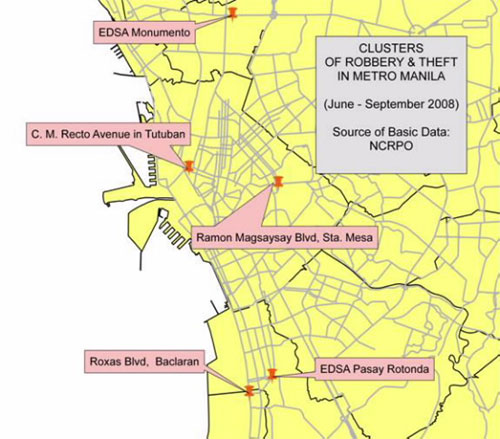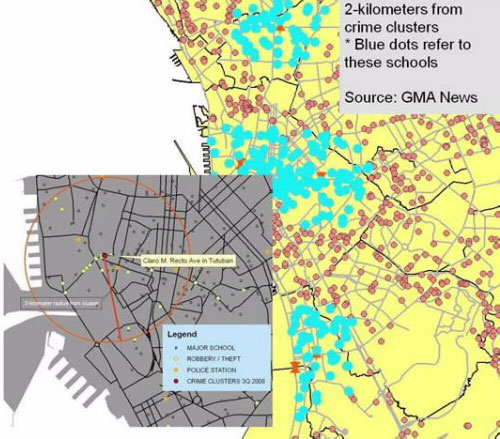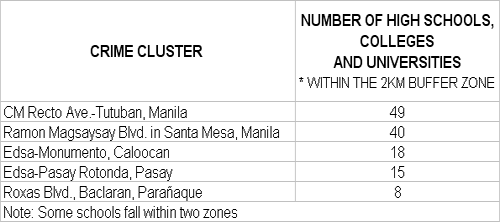Filtered By: Topstories
News
Robbers, thieves roam Metro Manila school areas
By BRENDA BARRIENTOS, GMA News Research
MANILA, Philippines - The A(H1N1) virus is not the only risk high school and college students in Metro Manila will be facing when classes open on Monday. A far more menacing threat is waiting: crime. A review of police crime reports done by GMA News Research reveals that more than a hundred high schools, colleges and universities are near Metro Manila’s crime hotspots – a clear testament to the dangers the students are facing outside the comforts of their classrooms. The crime reports submitted by victims to the police include crime locations and a trove of other information. Police say students are a common target of thieves and robbers, who find students' cell phones easy, lucrative pickings. NCRPO records show that eight incidents of robbery and theft occur on Metro Manila streets every day, making it the most commonly reported crime in the region from June to September last year. Robberies involve the use of force, usually knives, ice picks and guns. Plotting the crimes on a map, street robbery and theft cases were concentrated in five commercial areas in Metro Manila: Edsa-Monumento in Caloocan City; C.M. Recto Avenue in Manila; Ramon Magsaysay Boulevard in Sta. Mesa, Manila; Roxas Boulevard in Baclaran, Parañaque City, and Edsa-Pasay Rotonda in Pasay City. (see map below) 





More Videos
Most Popular



